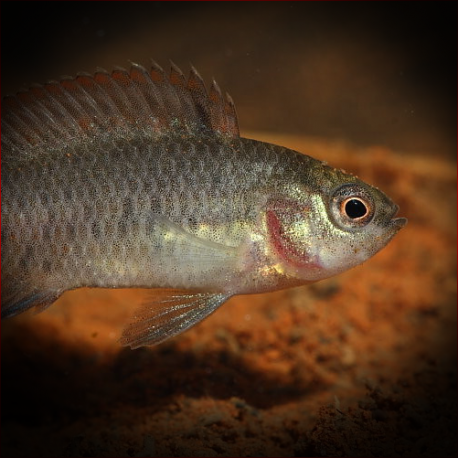More info
Datasheet
| Minimum Tank Size | 60 litres / 15.85 US gallons |
| Maximum Size | 6.0cm / 2.36inches |
| Temperature | 22°C / 71.60°F - 26°C / 78.80°F |
| Hardness | 2.02dgH / 36ppm - 12.05dgH / 215ppm |
| pH | 6.5-7.5 |
General Description
Like most Badids, Badis Siamensis is poorly documented and has yet to gain significant popularity in the aquarium hobby. It was previously known as Badis badis siamensis and can be identified by rows of horizontally-arranged dark markings on its flanks, distinguishing it from similar species within the genus. This species is a micropredator, feeding on small aquatic crustaceans, worms, insect larvae, and other zooplankton.
Aquarium Setup
For optimal care, a well-structured tank setup for Badis Siamensis should include a sand or gravel substrate, water-worn rocks, pebbles for cover, and cave-like structures for spawning sites. While plant species like Microsorum, Taxiphyllum, or Anubias can be added, they are not essential. Additionally, driftwood, branches, floating plants, and leaf litter can enhance the natural feel of the environment.
Behaviour
Badis Siamensis is not a gregarious fish and can be aggressive towards rival males, especially in smaller tanks. It is recommended to maintain this species alone or in specific group setups with ample space for territorial establishment. Tankmates should be peaceful and not outcompete for food to ensure the well-being of the Badis Siamensis.
Feeding and Diet
Feeding Badis Siamensis can be challenging as they are somewhat picky eaters known to reject dried foods. Offering regular meals of small live or frozen foods such as Artemia, Daphnia, or bloodworm is essential for their coloration and overall conditioning. Avoid feeding them chironomid larvae or Tubifex to prevent obesity and susceptibility to diseases.
Reproduction & Dimorphism
Members of the Badis genus, including Badis Siamensis, are cave spawners that form temporary pair bonds. During breeding, males become combative and display courtship behavior towards receptive females. Spawning usually results in 30-100 eggs, which the male guards and tends to until the fry hatch. Females are smaller with duller patterning, while males develop extended finnage as they mature.
Habitat and Distribution
Badis Siamensis is endemic to Peninsular Thailand and is primarily found in river systems along the western coastline in provinces such as Ranong, Phang Nga, Phuket, Krabi, Trang, and Satun. Their habitat consists of shallow, slow-moving streams and pools with dense marginal or submerged vegetation.

